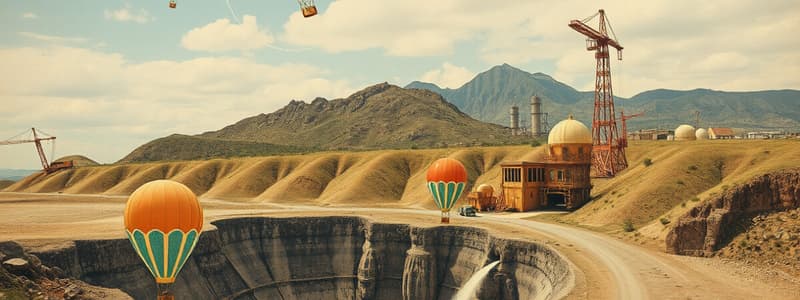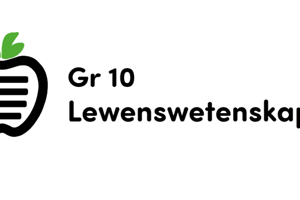Podcast
Questions and Answers
Which types of data are essential for planning reservoirs?
Which types of data are essential for planning reservoirs?
- Primarily geological and tourism-related data
- Only geological and seismic data
- Seismic data and existing population statistics
- Meteorological, hydrological, geological, and seismic data (correct)
What type of meteorological data is included in the planning process for reservoirs?
What type of meteorological data is included in the planning process for reservoirs?
- Data on current tourist activities
- Atmospheric temperatures and wind speed (correct)
- Sediment concentration exclusively
- Only rainfall statistics
Which factor is NOT considered when collecting data for irrigation projects?
Which factor is NOT considered when collecting data for irrigation projects?
- Future industrial development (correct)
- Historical flood data
- Soil types in the project area
- Current crop varieties and their water requirements
What type of data is gathered about fauna during the reservoir planning process?
What type of data is gathered about fauna during the reservoir planning process?
What is the significance of knowing the existing transmission systems in hydropower projects?
What is the significance of knowing the existing transmission systems in hydropower projects?
In the context of reservoir planning, which of the following is considered when evaluating the potential tourism impact?
In the context of reservoir planning, which of the following is considered when evaluating the potential tourism impact?
What information is crucial for determining the height of a dam during reservoir planning?
What information is crucial for determining the height of a dam during reservoir planning?
Which of the following components is part of the data collection for water supply projects?
Which of the following components is part of the data collection for water supply projects?
What is the first basic stage of geological investigation for reservoir sites?
What is the first basic stage of geological investigation for reservoir sites?
Which map scale is typically used during the reconnaissance phase for geological explorations?
Which map scale is typically used during the reconnaissance phase for geological explorations?
What is one of the main objectives of the reconnaissance investigation?
What is one of the main objectives of the reconnaissance investigation?
What should be prepared if a geological map of the area is not available during reconnaissance?
What should be prepared if a geological map of the area is not available during reconnaissance?
What is a primary concern to address during reconnaissance to ensure reservoir safety?
What is a primary concern to address during reconnaissance to ensure reservoir safety?
Which stage follows reconnaissance in geological exploration?
Which stage follows reconnaissance in geological exploration?
What type of map should be employed to delineate areas requiring detailed study during reconnaissance?
What type of map should be employed to delineate areas requiring detailed study during reconnaissance?
What types of zones should be identified to ensure the stability of the reservoir rim?
What types of zones should be identified to ensure the stability of the reservoir rim?
Which technique is NOT classified as a method for controlling sedimentation in reservoirs?
Which technique is NOT classified as a method for controlling sedimentation in reservoirs?
Watershed management and soil conservation measures aim to prevent sediment inflow into reservoirs. Which of the following is considered a method of watershed management?
Watershed management and soil conservation measures aim to prevent sediment inflow into reservoirs. Which of the following is considered a method of watershed management?
Which of the following factors does NOT affect the sediment yield of a reservoir?
Which of the following factors does NOT affect the sediment yield of a reservoir?
What is one example of an engineering method used for sediment control?
What is one example of an engineering method used for sediment control?
Sediment delivery characteristics play a crucial role in reservoir management. Which aspect does NOT directly influence sediment delivery?
Sediment delivery characteristics play a crucial role in reservoir management. Which aspect does NOT directly influence sediment delivery?
What is one of the main objectives of the reconnaissance stage in geological explorations for reservoir sites?
What is one of the main objectives of the reconnaissance stage in geological explorations for reservoir sites?
What type of study should be undertaken to identify faults with active seismic status?
What type of study should be undertaken to identify faults with active seismic status?
What is a critical action based on the reconnaissance studies during the preliminary investigation?
What is a critical action based on the reconnaissance studies during the preliminary investigation?
Which of these formations may need to be delineated at a scale of 1:50000 during preliminary investigations?
Which of these formations may need to be delineated at a scale of 1:50000 during preliminary investigations?
What does the impoundment of a reservoir sometimes result in?
What does the impoundment of a reservoir sometimes result in?
What should guidelines laid down in IS 4453:1980 be followed for?
What should guidelines laid down in IS 4453:1980 be followed for?
Which rock types are prevalent in the catchment of the storage dam project, affecting sediment rates?
Which rock types are prevalent in the catchment of the storage dam project, affecting sediment rates?
What aspect of the geological condition needs to be recognized during reconnaissance investigations?
What aspect of the geological condition needs to be recognized during reconnaissance investigations?
What is the primary purpose of freeboard in the context of dam construction?
What is the primary purpose of freeboard in the context of dam construction?
Which of the following constraints should be considered when planning a reservoir?
Which of the following constraints should be considered when planning a reservoir?
What is the first step in the planning process for constructing a reservoir?
What is the first step in the planning process for constructing a reservoir?
In what manner can the construction of a dam benefit the local community?
In what manner can the construction of a dam benefit the local community?
What type of system may be created to gather relevant information during the planning of a reservoir?
What type of system may be created to gather relevant information during the planning of a reservoir?
What factor does not contribute to the need for freeboard in dam construction?
What factor does not contribute to the need for freeboard in dam construction?
During reservoir planning, why is it important to assemble reports from previous investigations?
During reservoir planning, why is it important to assemble reports from previous investigations?
Why might a reservoir planning project face social constraints?
Why might a reservoir planning project face social constraints?
Study Notes
Reservoir Management and Planning
- Framework for managing silt and sediment zones in reservoirs by dividing them into distinct areas.
- Freeboard defined as safety margin to prevent dam overtopping, accounting for settlement, wave run-up, flood surges, and landslide impacts.
Steps in Reservoir Planning
- Initial step involves assessing needs and constraints for reservoir construction, considering social and financial factors.
- Second step focuses on gathering existing data, including:
- Past investigations and comparative project performance.
- Creation of Geographic Information Systems (GIS) utilizing survey maps.
- Topographical, geological, and seismic data to identify potential issues.
Data Collection for Informed Decisions
- Meteorological and hydrological data crucial for project feasibility, including rainfall, temperature, evaporation rates, and river flow statistics.
- Population studies and projections for water demand, along with irrigation needs related to local soil and crops.
- Analyzing energy demand for hydropower projects based on historical data and future growth forecasts.
- Biodiversity assessments to understand local flora, fauna, and recreational use of water bodies.
Geological Exploration Techniques
- Investigations are categorized into reconnaissance and preliminary stages:
- Reconnaissance:
- Utilizes geological maps and aerial photographs for initial assessment.
- Identifies leakage zones, unstable areas, and potential construction material sources.
- Recognizes major geological formations for silting predictions and identifies economic mineral deposits.
- Preliminary Investigation:
- Determines the extent of exploration needed, including drilling and geophysical surveys.
- Discerns potential leakage zones and geophysical characteristics like sand deposits and slides.
- Reconnaissance:
Sedimentation Control in Reservoirs
- Techniques for sedimentation management grouped into:
- Adequate reservoir design.
- Control of sediment inflow through watershed management and preventive measures.
- Sediment deposition control methods.
- Removal strategies for deposited sediment post-accumulation.
Factors Influencing Sediment Capacity
- Sediment yield dependent on various factors, such as topography, geological structure, meteorological conditions, and land use.
- Importance of sediment delivery characteristics of river systems to managing reservoir efficiency.
Control Measures for Sediment Inflow
- Implementation of soil conservation techniques categorized into:
- Engineering methods:
- Construction of check dams and use of gully plugging.
- Agronomic measures: Enhancements in farming practices.
- Forestry practices:
- Forest management to minimize erosion and sediment impact on reservoirs.
- Engineering methods:
Studying That Suits You
Use AI to generate personalized quizzes and flashcards to suit your learning preferences.
Description
Test your knowledge on the geological conditions relevant to the PHPA-I project. This quiz covers key concepts in geological formations, ecology, and site reconnaissance. Explore how science and technology converge with GNH values in this essential field.





